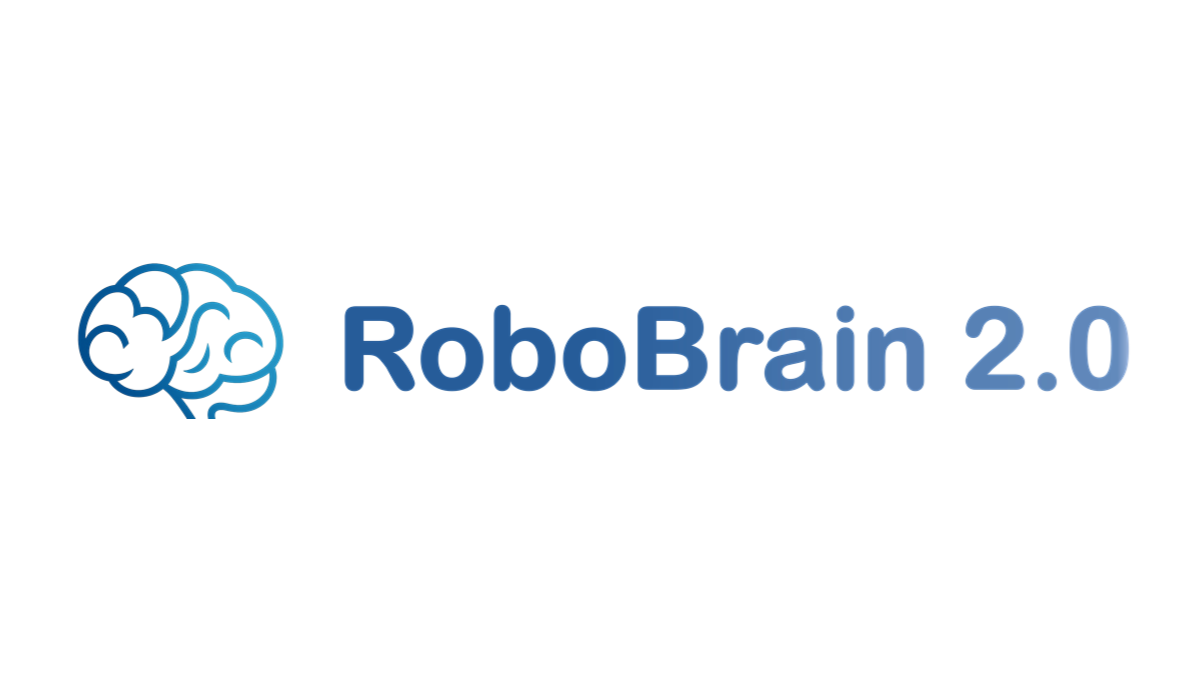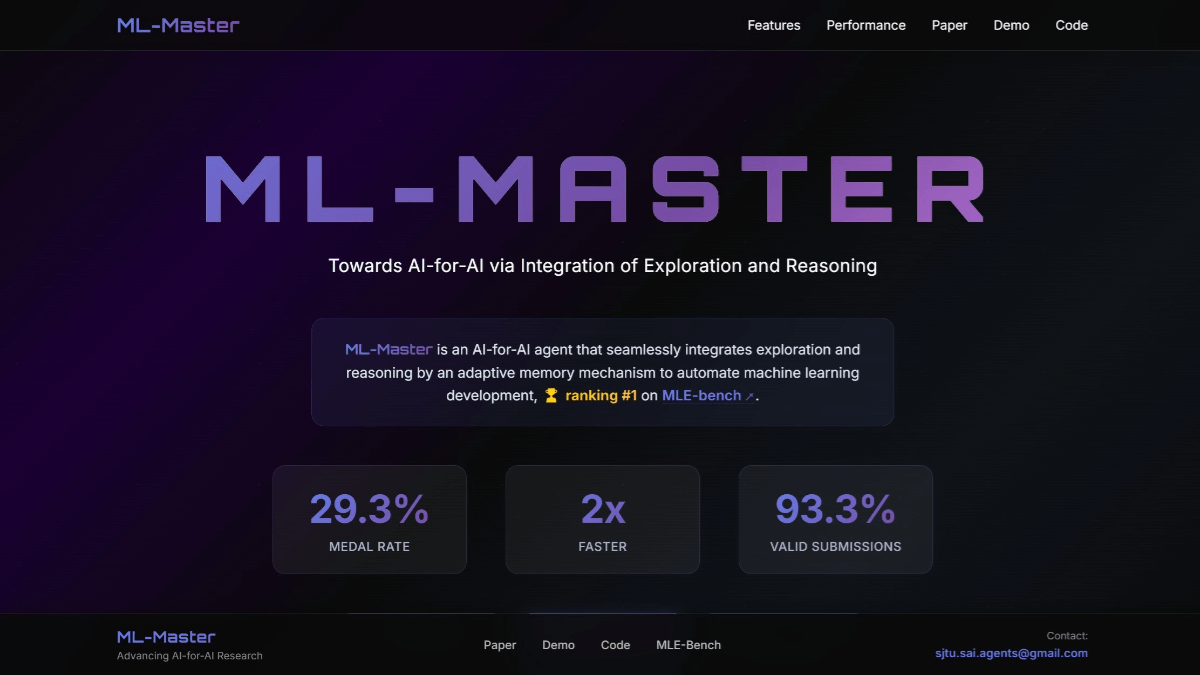RoboBrain 2.0 - Wisdom Spectrum's open source generalized embodied brain model
What is RoboBrain 2.0
RoboBrain 2.0 is an open source advanced embodied brain model that provides powerful perception, reasoning and planning capabilities for robots.RoboBrain 2.0 is available in versions 7B and 32B, and adopts a heterogeneous architecture that integrates a visual encoder and a language model to support multimodal inputs, such as high-resolution images, videos, and verbal commands. The model has excellent spatial understanding, temporal modeling and complex reasoning capabilities, and is capable of handling continuous decision-making tasks in dynamic environments. Based on a phased training strategy to gradually improve performance, the model is applicable to industrial automation, logistics and warehousing, smart home, medical rehabilitation and agricultural automation scenarios, helping embodied intelligence move from the laboratory to the real world.

Key Features of RoboBrain 2.0
- Precise spatial localization and reasoning: Accurate point localization, bounding box prediction and spatial relationship reasoning based on complex commands to support complex task operations in 3D space.
- Dynamic time modeling: The ability to cope with continuous decision-making tasks in dynamic environments and adapt to changing scenario requirements, with long-term planning, closed-loop interactions and multi-intelligence collaboration.
- Complex Reasoning and Interpretation: Supports multi-step reasoning and causal logic analysis, and can generate detailed explanations of the reasoning process to enhance the transparency and interpretability of decision-making.
- Multi-modal input support: Handles multiple input forms such as high-resolution images, multi-view inputs, video frames, verbal commands, and scene graphs, with powerful multimodal fusion capabilities.
- Real-time scene adaptation: Rapidly adapting to new scenarios, updating environmental information in real time, supporting efficient execution of dynamic tasks, and ensuring flexible operation of the robot in different scenarios.
RoboBrain 2.0's official website address
- Project website:: https://superrobobrain.github.io/
- GitHub repository:: https://github.com/FlagOpen/RoboBrain2.0
- HuggingFace Model Library:: https://huggingface.co/collections/BAAI/robobrain20-6841eeb1df55c207a4ea0036
- arXiv Technical Paper:: https://arxiv.org/pdf/2507.02029
How to use RoboBrain 2.0
- Visit the official website: Visit the RoboBrain 2.0 project website for features, architecture and technical details.
- Getting the code and the model
- Cloning code from GitHub repositories::
git clone https://github.com/FlagOpen/RoboBrain2.0.git
cd RoboBrain2.0- Download the model weights file from the GitHub repository at
releasespage, or through the Hugging Face model library.
- Download the model weights file from the GitHub repository at
- Installation of dependencies: Install the necessary dependencies according to the project documentation.
pip install -r requirements.txt- Configuration environment: Ensure that the hardware environment (e.g., GPU) meets the requirements for the model to run. Configure environment variables, e.g., set model weight paths, etc.
- Run the sample code: Sample code is available in the project repository showing how to load the model and perform inference.
from robobrain import RoboBrainModel
# 加载模型
model = RoboBrainModel(model_path="path/to/model_weights")
# 输入示例
input_data = {
"image": "path/to/image.jpg",
"instruction": "Navigate to the red object and pick it up."
}
# 运行推理
output = model.infer(input_data)
print(output)- Customized tasks: Adapt the input data format and task instructions to the application scenario. If needed, fine-tune the model to adapt to specific task requirements.
- Testing and Optimization: Test the performance of the model in a real environment and observe the performance in different scenarios. Optimize model parameters or adjust input data based on test results.
- Deployment to robots: Deploy the model into an actual robotic system to ensure real-time reception of sensor data and output of control commands. Perform system integration tests to ensure compatibility of the model with the robot hardware and software.
RoboBrain 2.0 Core Benefits
- Powerful multimodal fusion capabilities: Processes data in multiple modalities such as high-resolution images, multi-view inputs, video frames, verbal commands, and scene graphs to support the understanding and execution of complex task instructions.
- Excellent spatial and temporal modeling skills: The model is equipped with accurate spatial localization and relational reasoning capabilities to handle complex tasks in three-dimensional space. At the same time, it supports long-term planning and dynamic interaction for continuous decision-making tasks in dynamic environments.
- Complex Reasoning and Transparency: Supports multi-step reasoning and causal logic analysis, and can generate detailed explanations of the reasoning process to enhance the transparency and interpretability of decision-making.
- Framework for Effective Training and Assessment: Based on the FlagScale distributed training framework and FlagEvalMM evaluation framework, RoboBrain 2.0 can efficiently perform large-scale training and multimodal model evaluation to ensure continuous improvement of model performance.
- Rapid adaptation to new scenarios: The model can update environmental information in real time, quickly adapt to new scenarios, and support efficient execution of dynamic tasks.
- Open Source and Community Support: Provide rich documentation, sample code and community support for developers to learn, develop and customize.
Who is RoboBrain 2.0 for?
- Robotics engineers and researchers: Professionals engaged in robotics research and development to enhance the perception, reasoning and planning capabilities of robots and develop smarter robotic systems.
- Artificial Intelligence Developers: Powerful tools and frameworks to support the realization of complex tasks for engineers wishing to research and develop in the field of multimodal AI.
- Industrial Automation Specialist: In industrial production, to optimize the production process, improve production efficiency and quality, suitable for industrial scenarios that require high-precision operation and complex task execution.
- Logistics and Warehouse Managers: Improve logistics efficiency and reduce labor costs by controlling robots to complete cargo handling, sorting and inventory management tasks.
- Smart Home and Service Providers: As the core brain of the smart home, it understands natural language commands and controls robots to complete household tasks, while supporting home security monitoring.
© Copyright notes
Article copyright AI Sharing Circle All, please do not reproduce without permission.
Related posts

No comments...




